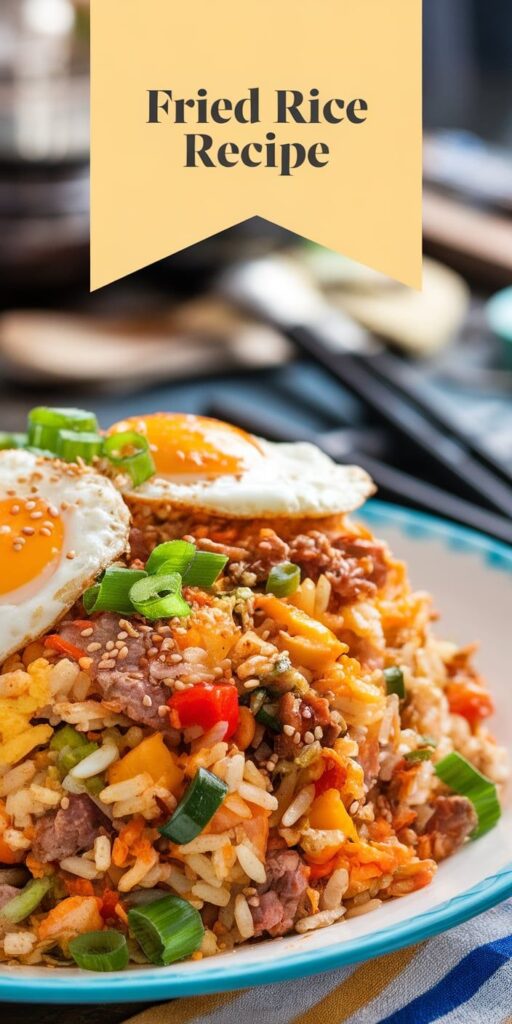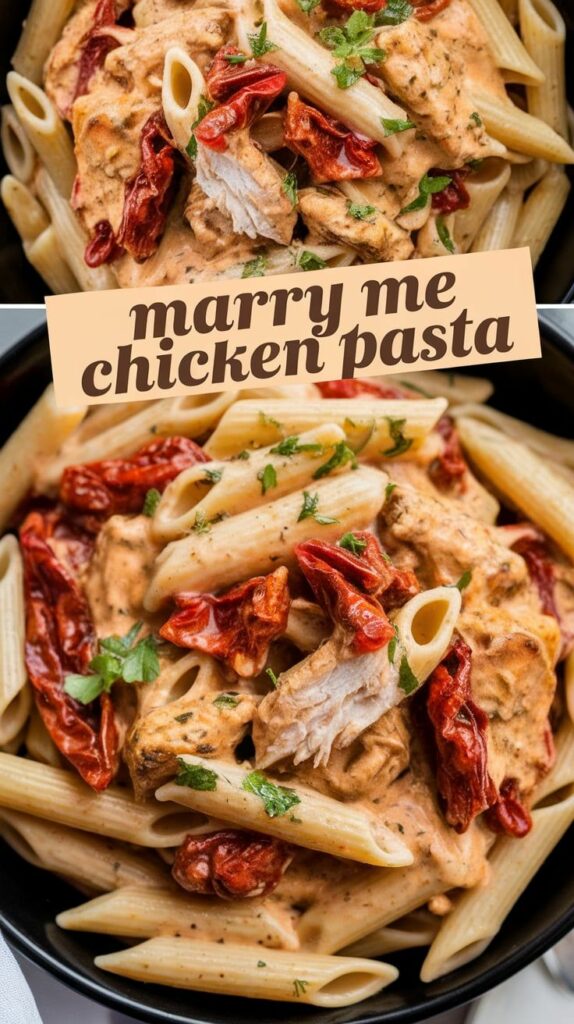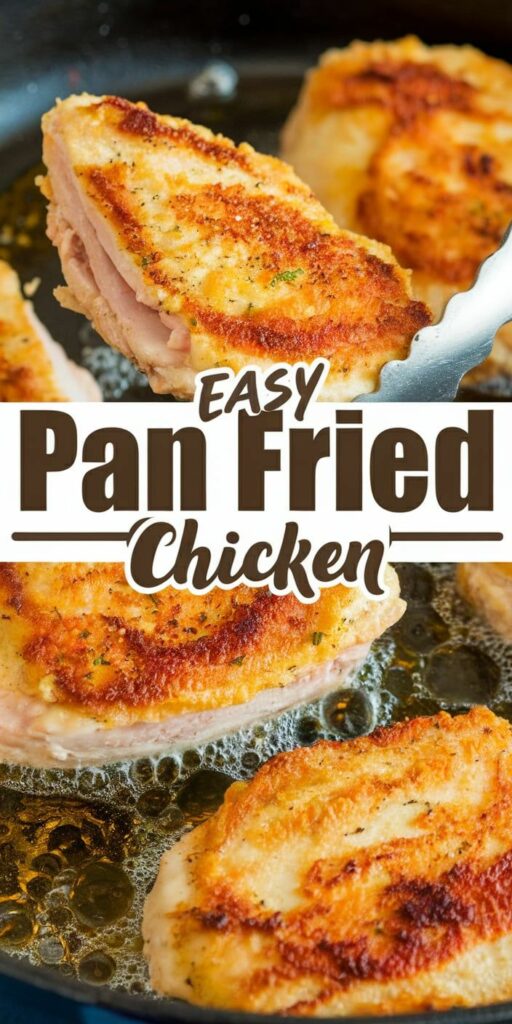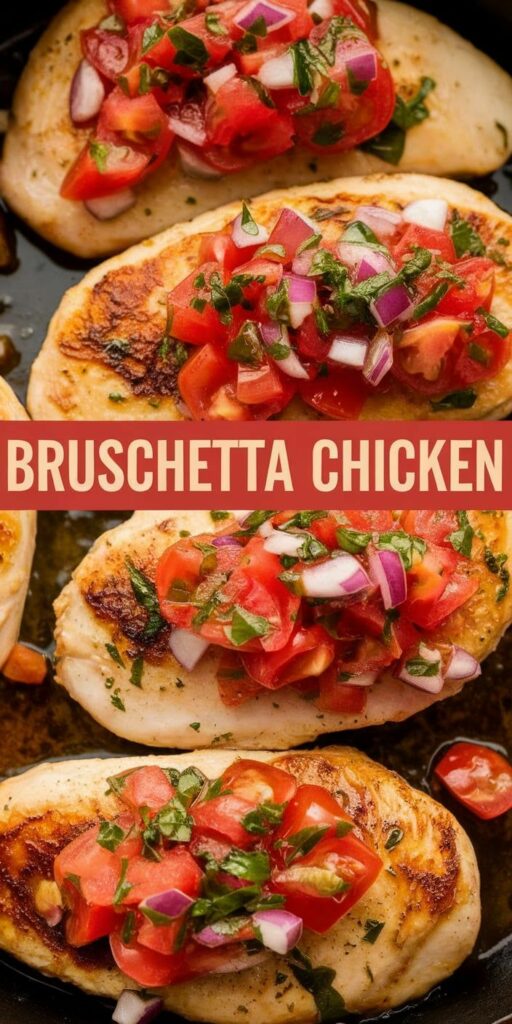Craving a quick and delicious meal that comes together in minutes? My easy fried rice recipe is about to become your new weeknight dinner hero. This homemade fried rice is packed with flavor, incredibly versatile, and simple enough for even beginner cooks to master.
Born from a love of Asian cuisine, this fried rice recipe transforms leftover rice into a mouthwatering dish that rivals any restaurant version. Whether you’re looking to use up extra ingredients or want a satisfying meal in under 30 minutes, this recipe has you covered.
The beauty of this homemade fried rice is its flexibility. You can customize it with your favorite proteins, vegetables, and seasonings. I’ll walk you through every step to ensure you create a restaurant-quality meal right in your own kitchen.
Get ready to discover how simple it can be to create an incredible fried rice recipe that will impress your family and friends. From perfectly crispy rice to perfectly balanced flavors, this recipe is about to become your go-to comfort food.

Why I Love Making Fried Rice at Home
My passion for homemade fried rice started with a simple desire to recreate the delicious Asian cooking I enjoyed at restaurants. What began as an experimental kitchen adventure quickly became a cherished culinary skill that transformed my approach to cooking and meal preparation.
My Personal Asian Cooking Journey
Growing up, I was always fascinated by the vibrant flavors of Asian cuisine. My first attempts at making fried rice were far from perfect, but each try taught me something new. I learned that mastering homemade fried rice isn’t just about following a recipe—it’s about understanding techniques and developing intuition in the kitchen.
Homemade Wins Over Takeout
Preparing fried rice at home offers incredible advantages:
- Significantly lower cost compared to restaurant takeout
- Complete control over ingredient quality
- Ability to customize flavors and spice levels
- Healthier cooking methods with less oil
Transforming Leftover Rice Recipes
One of the most satisfying aspects of homemade fried rice is its ability to rescue leftover rice recipes. Instead of discarding day-old rice, I’ve discovered it’s actually the perfect base for a delicious, quick meal. Cold, refrigerated rice develops a texture that makes it ideal for creating restaurant-style fried rice right in my own kitchen.
By embracing these leftover rice recipes, I not only reduce food waste but also create meals that are both economical and incredibly tasty. My journey with homemade fried rice continues to be an exciting culinary adventure.
Essential Ingredients for the Perfect Fried Rice Recipe
Creating delicious fried rice starts with selecting the right fried rice ingredients. I’ve learned through years of cooking that not all rice is created equal when it comes to making this classic dish.
The best rice for fried rice is always day-old long-grain white rice. Fresh rice contains too much moisture and will turn your dish into a soggy mess. Refrigerated rice from the previous day has dried-out grains that separate perfectly during cooking.
- Long-grain white rice (preferably day-old)
- Eggs (for protein and binding)
- Soy sauce
- Sesame oil
- Vegetable oil
Your protein options can vary based on preference. I love using chicken, but shrimp or tofu work wonderfully too. The key is to dice your protein into small, uniform pieces that cook quickly and evenly.
For vegetables, I recommend a mix that adds color and nutrition. Carrots, peas, and green onions are my go-to choices. They provide a great balance of flavor and texture to your fried rice.
Seasonings make or break your fried rice. A good quality soy sauce, a dash of sesame oil, and a pinch of white pepper can elevate your dish from ordinary to extraordinary. Always taste and adjust seasonings as you cook.
Kitchen Tools and Equipment You’ll Need
Creating the perfect fried rice requires more than just ingredients. The right wok for fried rice and essential utensils can transform your home cooking experience. I’ll guide you through selecting the best equipment to make restaurant-quality fried rice in your own kitchen.
Choosing the Right Wok or Pan
When selecting a wok for fried rice, material matters. Carbon steel woks are my top recommendation for authentic flavor and heat distribution. Cast iron and stainless steel work well too, but carbon steel provides the best heat responsiveness.
- Carbon steel wok: Best heat control and traditional cooking method
- Cast iron wok: Excellent heat retention
- Stainless steel pan: Good alternative for home cooks
Must-Have Fried Rice Utensils
Your fried rice utensils can make or break the cooking process. I recommend investing in specialized tools that make preparation easier and more authentic.
| Utensil | Purpose |
|---|---|
| Wooden spatula (wok chuan) | Prevents scratching, ideal for stir-frying |
| Long-handled cooking chopsticks | Precise ingredient manipulation |
| High-heat resistant spatula | Helps mix ingredients quickly |
Heat Source Considerations
High heat is crucial for creating that perfect wok hei flavor. Gas stoves work best, but electric and induction cooktops can still produce great results with the right technique.
Secret Tips for Restaurant-Style Fried Rice
Creating restaurant-style fried rice at home isn’t as challenging as you might think. I’ve spent years perfecting my technique, and I’m excited to share my top fried rice tips that will transform your home cooking.
The key to authentic restaurant-style fried rice starts with rice preparation. Cold, day-old rice is your secret weapon. Fresh rice contains too much moisture and will turn mushy when stir-frying. Spread your leftover rice on a plate and refrigerate overnight to achieve the perfect texture.
- Use day-old rice for best results
- Ensure rice grains are separated before cooking
- High heat is crucial for authentic flavor
- Prep all ingredients before cooking
Heat management is critical when making restaurant-style fried rice. A blazing hot wok or large skillet helps create that signature slightly charred taste called “wok hei”. I recommend using a cast-iron skillet or carbon steel wok for optimal heat distribution.
| Technique | Impact on Fried Rice |
|---|---|
| High Heat Cooking | Creates authentic smoky flavor |
| Quick Stir-Frying | Prevents ingredients from becoming soggy |
| Ingredient Order | Ensures perfect texture and flavor balance |
Another pro tip is to cook ingredients in stages. Start with proteins, remove them, then cook vegetables. This method prevents overcrowding and maintains each ingredient’s distinct texture. When everything comes together, your fried rice will taste just like it came from a professional kitchen.
Step-by-Step Fried Rice Recipe
Learning how to make fried rice at home is easier than you might think. My personal fried rice recipe steps will transform your home cooking and help you create a delicious meal that rivals restaurant quality. The key is preparation and understanding the right techniques.
Let me walk you through the essential stages of creating the perfect fried rice. Mastering these fried rice recipe steps will ensure you get restaurant-style results every single time.
Preparing the Rice
The foundation of great fried rice is the rice itself. I recommend using day-old, cold rice because freshly cooked rice contains too much moisture. Ideally, use long-grain white rice that has been refrigerated overnight.
- Cook rice and spread on a flat tray
- Refrigerate for at least 4-6 hours
- Break up any clumps before cooking
Cooking the Proteins
When learning how to make fried rice, selecting the right protein is crucial. Chicken, shrimp, or eggs work wonderfully. I prefer cooking proteins separately to maintain their individual flavors and prevent overcooking.
- Cut proteins into small, uniform pieces
- Season with salt and pepper
- Stir-fry on high heat for 2-3 minutes
- Remove and set aside
Combining All Ingredients
The final stage of our fried rice recipe steps involves bringing everything together. High heat and quick movements are essential for achieving that perfect restaurant-style texture and flavor.
- Use a hot wok or large skillet
- Add oil and aromatics first
- Incorporate rice and stir continuously
- Mix in cooked proteins
- Season with soy sauce
Experiment with these techniques, and you’ll soon master the art of creating delicious homemade fried rice that will impress your family and friends.
Common Mistakes to Avoid When Making Fried Rice
Mastering fried rice takes practice, and I’ve learned plenty about avoiding common fried rice mistakes through my own kitchen adventures. Understanding these potential pitfalls can transform your home-cooked meal from mediocre to magnificent.
When it comes to fried rice troubleshooting, the most critical error is using freshly cooked rice. Warm, moist rice turns mushy and clumps together, destroying the signature texture of great fried rice. My secret? Use day-old rice that’s been refrigerated. The dried-out grains separate perfectly and create that restaurant-quality crispiness.
- Never use wet or freshly cooked rice
- Avoid overcrowding your cooking pan
- Ensure high heat during cooking
- Season ingredients before combining
Another classic fried rice mistake is not preparing your ingredients beforehand. Stir-frying happens quickly, so having everything chopped and ready prevents burning and ensures even cooking. I recommend pre-cutting proteins, vegetables, and measuring out seasonings before you start.
Temperature control is crucial in fried rice troubleshooting. Your wok or pan needs to be scorching hot to achieve that perfect golden-brown color and slightly crispy texture. Low heat leads to soggy, uninspired fried rice that lacks the smoky flavor characteristic of great Asian cuisine.
By avoiding these common pitfalls, you’ll be well on your way to creating restaurant-quality fried rice right in your own kitchen.
Delicious Variations and Add-ins for Your Fried Rice
I love exploring different fried rice variations that can transform a simple dish into an exciting culinary adventure. Protein choices can dramatically change the flavor profile of your fried rice. Swap out chicken for succulent shrimp, tender beef, or protein-packed tofu to create a completely new dining experience.
Regional fried rice add-ins bring incredible diversity to this classic dish. Thai pineapple fried rice offers a sweet and tangy twist, while Indonesian nasi goreng introduces bold spices and a rich, complex flavor. My favorite unexpected additions include kimchi for a spicy kick, curry powder for warmth, or XO sauce for an umami punch.
Vegetable combinations can elevate your fried rice to gourmet levels. I recommend experimenting with seasonal vegetables like roasted butternut squash in autumn or fresh spring peas. Don’t be afraid to mix unexpected ingredients – sometimes the most unconventional fried rice variations become family favorites.
Pro tip for adventurous home cooks: keep your pantry stocked with global spices and sauces. These ingredients allow you to quickly transform a basic fried rice recipe into an international culinary experience that will surprise and delight your taste buds.



